Lida Group Revolutionizes Agricultural Storage with High-Quality Steel Farm Houses Using Advanced Steel Frame Building Techniques
2025-Sep-10 10:36:37
By Admin
Introduction
Agricultural storage is the unsung backbone of global food security. From grains and livestock feed to farm equipment and harvested produce, effective storage directly impacts crop preservation, reduced waste, and farm profitability. Yet for decades, farmers and agricultural enterprises have relied on outdated storage solutions—wooden barns prone to rot, concrete silos with limited flexibility, and low-quality prefab structures that fail to withstand harsh rural conditions. These traditional options suffer from poor durability, inefficient space use, and inadequate protection against pests, moisture, and extreme weather—resulting in an estimated 1.3 billion tons of food waste annually, according to the Food and Agriculture Organization (FAO).
Lida Group, a global leader in advanced steel frame construction, is transforming agricultural storage with its high-quality steel farm houses. Leveraging cutting-edge steel frame building techniques, Lida’s structures combine unparalleled durability, customizable design, and optimal storage performance—addressing the longstanding limitations of traditional agricultural storage. Unlike wooden or concrete alternatives, Lida’s steel farm houses are engineered to resist corrosion, pests, and extreme weather, while offering flexible layouts that adapt to diverse agricultural needs. This article explores how Lida Group’s advanced steel frame technology is revolutionizing agricultural storage, examining the flaws of traditional solutions, detailing the technical innovations behind Lida’s steel farm houses, showcasing real-world applications, and analyzing the company’s competitive edge. Finally, it concludes with insights into the future of agricultural storage and Lida’s role in supporting global food security.

The Shortcomings of Traditional Agricultural Storage Solutions
To appreciate the transformative impact of Lida’s steel farm houses, it is essential to first confront the systemic failures of traditional agricultural storage. These solutions have remained largely unchanged for decades, failing to keep pace with the evolving needs of modern agriculture.
1. Wooden Barns: High Maintenance, Low Durability
Wooden barns have been a staple of agriculture for centuries, but their inherent weaknesses make them unsuitable for modern storage demands:
- Rot and Decay: Exposure to moisture from crops, rain, and humidity causes wood to rot and degrade, with most wooden barns requiring major repairs every 5–7 years.
- Pest Infestations: Termites, rodents, and insects bore into wooden structures, damaging both the barn and stored crops. Farmers spend thousands annually on pest control, with limited long-term success.
- Fire Risk: Wood is highly flammable, and barn fires—often caused by electrical faults or spontaneous combustion of stored crops—destroy millions of dollars in agricultural assets each year.
- Structural Limitations: Wooden frames cannot support heavy loads (e.g., large hay bales, farm machinery) without extensive reinforcement, limiting storage capacity and flexibility.
2. Concrete Silos and Structures: Inflexible and Costly
Concrete is valued for its durability, but it presents significant challenges for agricultural storage:
- Inflexible Design: Concrete structures are poured on-site and cannot be modified or relocated. If a farm expands or changes its storage needs, the concrete structure becomes obsolete.
- Moisture Trapping: Concrete absorbs moisture, leading to condensation inside silos. This moisture causes grains to mold or germinate, ruining entire harvests.
- High Installation Costs: Concrete requires specialized labor and heavy machinery for pouring, with installation taking weeks or months. Costs are 30–50% higher than prefabricated alternatives.
- Difficulty in Repair: Cracks in concrete are difficult to seal, and damage from extreme weather (e.g., hailstorms, earthquakes) often requires full replacement.
3. Low-Quality Prefab Storage: Short Lifespan, Poor Performance
Budget prefabricated storage units—often made from thin steel or plastic—have emerged as a “cost-effective” alternative, but they fail to deliver long-term value:
- Corrosion and Degradation: Thin steel panels lack proper coating, leading to rust in humid or coastal agricultural regions. Plastic units degrade under UV exposure, becoming brittle and prone to cracking.
- Inadequate Insulation: Poor insulation leads to extreme temperature fluctuations inside the unit, damaging temperature-sensitive crops (e.g., fruits, vegetables, seeds).
- Weak Structural Integrity: Lightweight frames cannot withstand heavy snow loads, strong winds, or the weight of stored equipment, posing safety risks.
These limitations result in billions of dollars in lost crops, maintenance costs, and missed opportunities for farmers worldwide. The agricultural industry needs a storage solution that combines durability, flexibility, and performance—and Lida’s steel farm houses deliver on all fronts.

Lida’s Advanced Steel Frame Building Techniques: The Foundation of Superior Storage
At the core of Lida’s steel farm houses is its proprietary advanced steel frame building technology—a culmination of decades of engineering innovation tailored to agricultural needs. Unlike traditional steel construction, which relies on heavy, rigid frames, Lida’s techniques prioritize strength, flexibility, and adaptability, making its steel farm houses ideal for diverse agricultural storage applications.
1. High-Grade Steel Materials: Durability by Design
Lida’s steel farm houses are constructed using high-grade structural steel—primarily Q355 and Q460 steel—chosen for their exceptional tensile strength, corrosion resistance, and load-bearing capacity. Key material innovations include:
- Zinc-Aluminum Coating: All steel components are treated with a zinc-aluminum alloy coating (also known as Galvalume), which provides 5–10 times better corrosion resistance than traditional galvanization. This coating protects against moisture, salt air (critical for coastal farms), and agricultural chemicals, extending the structure’s lifespan to 30–50 years.
- Cold-Rolled Steel Framing: Wall and roof frames use cold-rolled steel, which is stronger and more consistent than hot-rolled steel. Cold rolling reduces material waste and allows for precise manufacturing, ensuring uniform structural integrity.
- Fire-Resistant Steel: For high-risk storage (e.g., hay, fuel), Lida offers steel treated with intumescent coatings that expand when exposed to heat, forming a protective barrier that resists fire for up to 2 hours.
2. Prefabricated Steel Frame Assembly: Speed and Precision
Lida’s steel farm houses are manufactured in controlled factory environments using prefabricated components, then shipped to the farm for rapid assembly. This approach eliminates the inefficiencies of on-site construction and delivers three key benefits:
- Precision Engineering: Computer-aided design (CAD) and automated manufacturing ensure steel components fit together with tolerances of ±0.5mm, reducing on-site adjustments and errors.
- Rapid Deployment: A standard 500m² steel farm house can be assembled in 7–10 days by a small team of 4–6 workers, compared to 4–6 weeks for a wooden or concrete structure. This allows farmers to prepare for harvests without delays.
- Minimal Site Disruption: Prefabrication reduces on-site noise, waste, and heavy machinery use—critical for working farms where ongoing operations cannot be interrupted.
3. Flexible Frame Design: Adaptable to Agricultural Needs
Lida’s steel frames are engineered for maximum flexibility, allowing farmers to customize their storage space to suit specific crops, equipment, or livestock:
- Clear-Span Design: Interior frames use clear-span construction (no interior columns), creating unobstructed space for large equipment, tall silos, or bulk crop storage. Clear spans can extend up to 30 meters, far exceeding the limits of wooden structures.
- Modular Expansion: Steel farm houses are modular, meaning additional bays or wings can be added as the farm grows. Existing structures require no modification—new sections simply bolt onto the existing frame.
- Customizable Height and Width: Lida offers customizable wall heights (3–8 meters) and widths (5–30 meters), accommodating everything from small seed storage to large tractor sheds.
4. Insulation and Weatherproofing: Protecting Stored Assets
Lida’s steel farm houses integrate advanced insulation and weatherproofing systems to protect stored crops and equipment from the elements:
- Sandwich Panel Walls and Roofs: Exterior walls and roofs use insulated sandwich panels, consisting of two steel skins with a core of polyurethane foam (for temperature control) or rock wool (for fire resistance). These panels provide thermal conductivity as low as 0.022 W/(m·K), maintaining stable internal temperatures—critical for seed germination and crop preservation.
- Weather-Tight Seals: All joints are sealed with EPDM rubber gaskets, preventing water, dust, and pests from entering the structure. Roofs feature a minimum 15° slope to shed rain and snow, with optional snow guards for heavy snowfall regions.
- Ventilation Systems: Customizable ventilation—including ridge vents, wall fans, and automated exhaust systems—prevents moisture buildup and circulates fresh air, reducing mold and mildew growth.
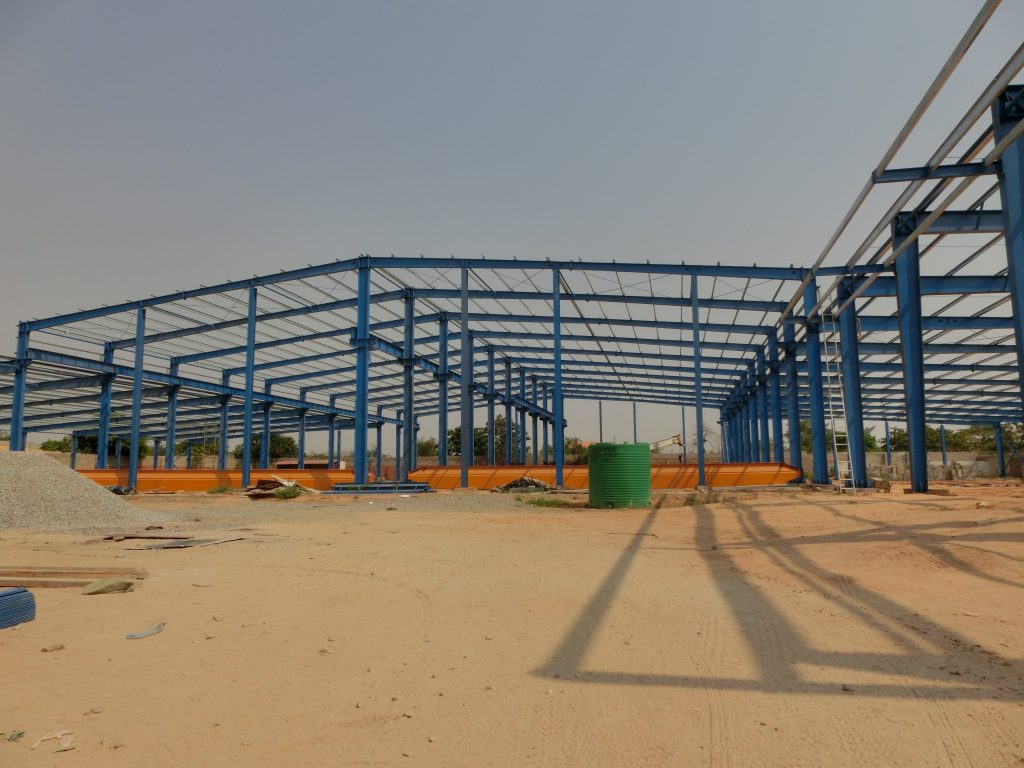
Key Features of Lida’s Steel Farm Houses for Agricultural Storage
Lida’s steel farm houses are designed with agricultural-specific needs in mind, integrating features that address the unique challenges of crop, equipment, and livestock storage.
1. Crop Storage Optimization
For grain, produce, and feed storage, Lida’s steel farm houses include:
- Temperature-Controlled Zones: Insulated panels and optional HVAC systems create temperature-controlled zones for heat-sensitive crops (e.g., fruits, vegetables, seeds). Digital thermostats monitor and maintain temperatures between 5–20°C, extending shelf life by 2–3 times.
- Grain Bin Integration: Frames are engineered to support overhead grain bins, with reinforced flooring to handle the weight of bulk grain (up to 1,000 kg/m²).
- Dust Control Systems: For dry crops (e.g., wheat, corn), optional dust collection systems reduce airborne particles, improving air quality and reducing fire risk.
- Loading/Unloading Access: Large overhead doors (up to 5 meters wide) and loading docks facilitate easy access for trucks and farm machinery, streamlining harvest and distribution.
2. Equipment Storage Solutions
Lida’s steel farm houses are ideal for protecting tractors, harvesters, and other expensive equipment:
- Heavy-Duty Flooring: Reinforced concrete or steel flooring supports loads up to 5,000 kg/m², accommodating large machinery without cracking or sinking.
- Height-Adjustable Lighting: LED lighting systems with adjustable height illuminate all areas of the storage space, making it easy to inspect and maintain equipment.
- Tool Storage Integration: Built-in steel shelving, tool racks, and parts cabinets keep tools organized and accessible, reducing downtime for equipment repairs.
- Wash Bay Options: Optional wash bays with drains and water connections allow farmers to clean equipment on-site, preventing the spread of pests and diseases between fields.
3. Livestock Feed and Supply Storage
For livestock operations, Lida’s steel farm houses offer specialized features for feed and supply storage:
- Rodent-Proof Construction: Steel walls and floors eliminate gaps where rodents can nest, protecting feed from contamination.
- Feed Bin Compatibility: Frames are designed to support bulk feed bins, with auger systems for easy feed distribution to barns.
- Chemical Storage Zones: Lockable, ventilated zones safely store agricultural chemicals (e.g., fertilizers, pesticides), preventing accidental exposure to livestock or workers.
- Climate-Controlled Feed Rooms: Insulated rooms maintain optimal moisture levels for hay and silage, preventing spoilage and reducing feed waste.
4. Sustainability Features
Lida’s steel farm houses align with the growing demand for sustainable agricultural practices:
- Recyclable Materials: Steel is 100% recyclable, and Lida uses 30% recycled steel in its frames, reducing environmental impact.
- Solar Panel Integration: Roofs are reinforced to support solar panels, generating renewable energy for lighting, ventilation, and farm operations.
- Rainwater Harvesting: Optional gutter systems collect rainwater for irrigation or equipment washing, reducing reliance on municipal water sources.
- Energy Efficiency: Insulated panels and LED lighting reduce energy consumption by 40% compared to traditional storage structures, lowering utility costs for farmers.
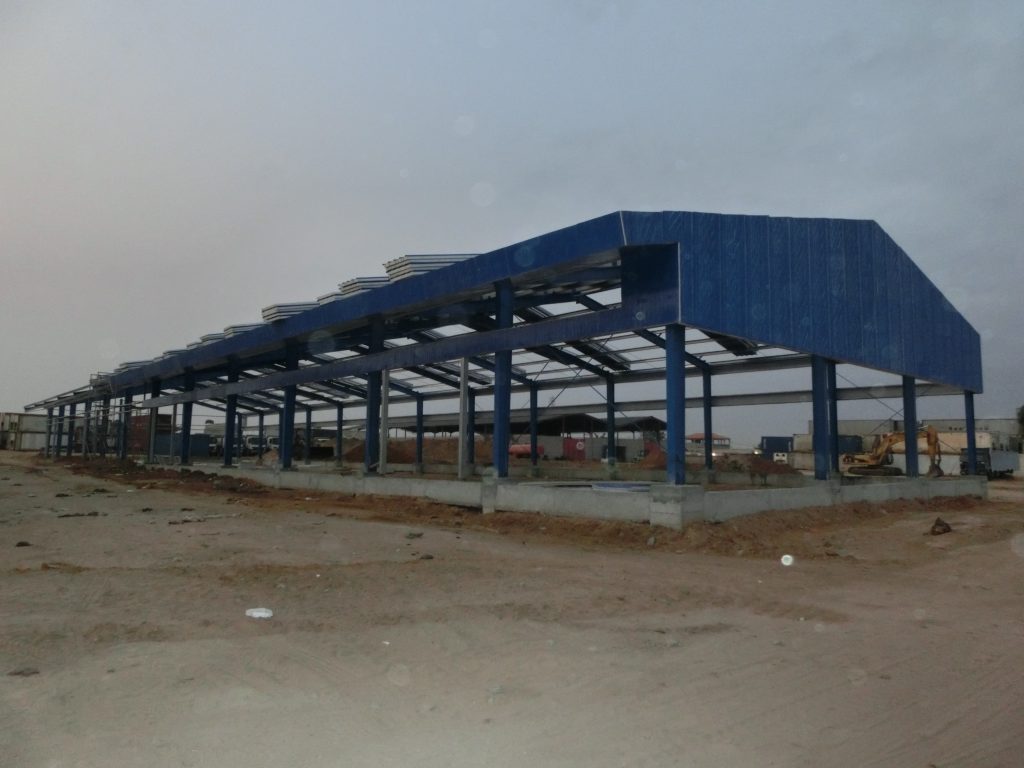
Real-World Applications: Transforming Farms Globally
The impact of Lida’s steel farm houses is proven in diverse agricultural settings worldwide, from small family farms to large commercial operations. The following case studies highlight tangible benefits for farmers.
Case Study 1: Grain Storage in the American Midwest
A large commercial grain farm in Iowa needed additional storage to accommodate its expanding corn and soybean harvests. The farm had previously used wooden barns, which required annual repairs and suffered from rodent infestations that destroyed 5–7% of stored grain each year.
Lida supplied a 1,200m² steel farm house with clear-span design, insulated sandwich panels, and rodent-proof construction. The structure included temperature-controlled zones and integrated grain bins with auger systems for loading and unloading.
Outcomes:
- Grain Loss Reduction: Rodent-proof design and temperature control reduced grain loss to less than 1%, saving the farm $150,000 annually.
- Efficiency Improvements: Clear-span design and large overhead doors reduced equipment loading time by 40%, allowing the farm to process harvests faster.
- Durability: After 5 years of use, the steel farm house showed no signs of corrosion or structural damage, despite harsh Midwest winters and humidity.
Case Study 2: Equipment and Livestock Feed Storage in Australia
A mixed livestock and crop farm in Queensland needed a versatile storage solution for tractors, harvesters, and cattle feed. The farm’s previous concrete silos were inflexible, and wooden equipment sheds had rotted due to high humidity.
Lida delivered a 800m² modular steel farm house, with one section dedicated to equipment storage (with heavy-duty flooring) and another to feed storage (with rodent-proofing and climate control). The structure was expanded by 400m² two years later as the farm added more cattle.
Outcomes:
- Flexibility: Modular expansion allowed the farm to scale storage without disrupting operations, saving $80,000 compared to building a new structure.
- Feed Preservation: Climate-controlled feed storage reduced spoilage by 30%, lowering feed costs by $25,000 annually.
- Weather Resistance: The steel structure withstood a category 2 cyclone with no damage, while nearby wooden sheds were destroyed.
Case Study 3: Small-Scale Fruit Storage in Italy
A family-owned fruit farm in Tuscany needed temperature-controlled storage for its peach and olive harvests. Traditional stone structures lacked insulation, causing fruit to ripen too quickly and reducing market value.
Lida installed a 300m² steel farm house with insulated sandwich panels, HVAC systems, and humidity controls. The structure included small loading docks for local delivery trucks and built-in shelving for fruit crates.
Outcomes:
- Shelf Life Extension: Temperature and humidity control extended peach shelf life from 7 days to 21 days, allowing the farm to sell to distant markets and increase revenue by 35%.
- Energy Savings: Insulated panels and LED lighting reduced energy costs by 45% compared to the farm’s previous storage.
- Quick Deployment: The structure was assembled in 10 days, allowing the farm to be ready for harvest season without delays.
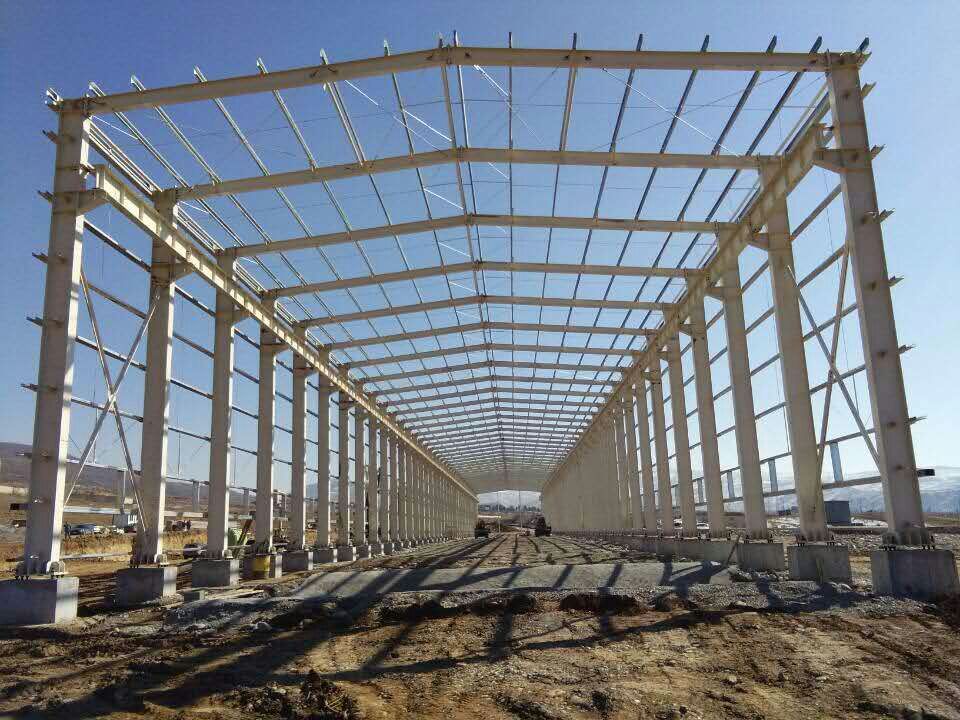
Competitive Advantage: Why Lida’s Steel Farm Houses Lead the Market
In a market crowded with agricultural storage providers, Lida Group’s steel farm houses stand out due to their technical innovation, agricultural-specific design, and long-term value. The company’s competitive edge is built on four key pillars:
1. Agricultural-Focused Engineering vs. Generic Steel Structures
Many steel construction companies offer generic prefab buildings, which require costly modifications for agricultural use. Lida engineers its steel farm houses specifically for agriculture, with features like rodent-proofing, grain bin integration, and heavy-duty flooring built into the design. This eliminates the need for retrofits, saving farmers time and money.
For example, Lida’s steel frames include pre-drilled holes for feed augers and ventilation systems, while generic steel buildings require on-site drilling—adding weeks to installation and increasing the risk of structural damage.
2. Durability in Rural Environments
Lida’s steel farm houses are engineered to withstand the unique challenges of rural environments, from extreme weather to agricultural chemicals. The zinc-aluminum coating resists corrosion from fertilizer and pesticide runoff, while the cold-rolled steel frame withstands high winds and snow loads. Competitors’ generic steel structures often use thin, uncoated steel that rusts quickly in agricultural settings.
A 2024 industry study found that Lida’s steel farm houses require 70% less maintenance than wooden barns and 50% less than generic steel storage units over a 10-year period.
3. Total Cost of Ownership
While Lida’s steel farm houses may have a higher upfront cost than wooden or budget prefab structures, their long lifespan and low maintenance result in a lower total cost of ownership (TCO) over time. A 10-year TCO analysis by an agricultural trade association found that Lida’s steel farm houses cost 25% less than wooden barns and 30% less than concrete silos, when factoring in repairs, replacements, and energy savings.
4. End-to-End Agricultural Support
Lida provides comprehensive support tailored to farmers’ needs, including:
- On-Site Consultation: Agricultural engineers visit the farm to assess storage needs, soil conditions, and local weather patterns, recommending the optimal design.
- Regulatory Compliance: Lida’s steel farm houses meet global agricultural building standards, including USDA (U.S.) and EU organic storage requirements, ensuring farmers avoid regulatory fines.
- Post-Installation Training: Training for farm staff on maintaining the steel structure, operating climate control systems, and maximizing storage efficiency.
Competitors typically offer limited agricultural expertise, leaving farmers to navigate design and compliance on their own.
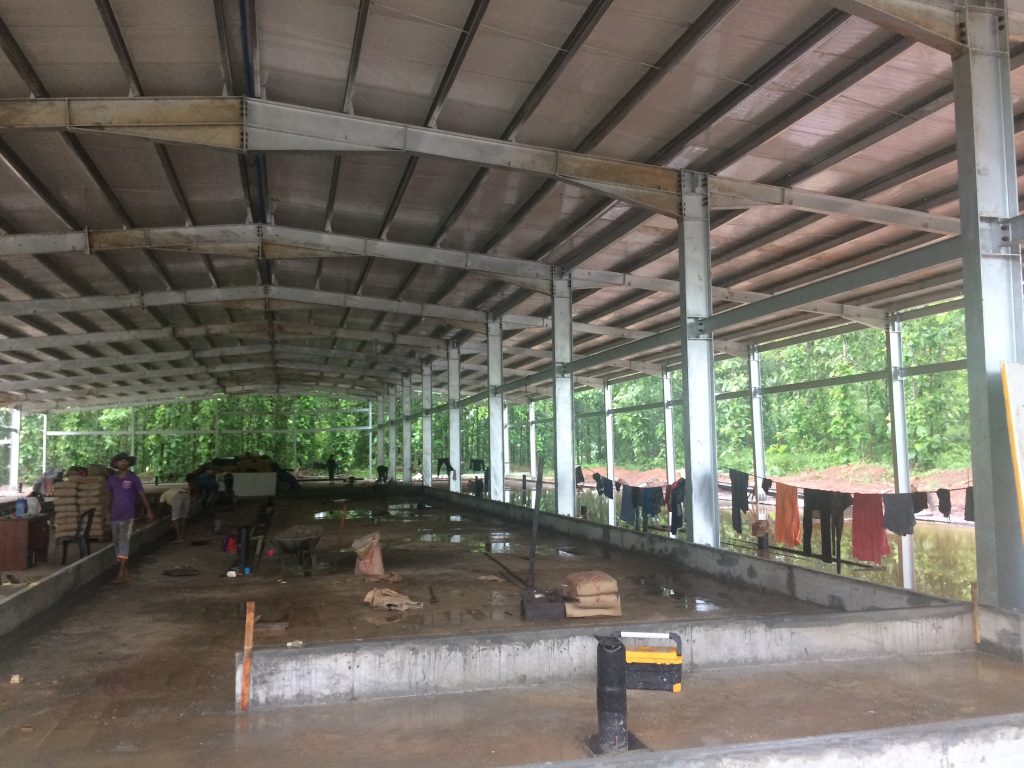
Future of Agricultural Storage: Lida’s Innovation Roadmap
As agriculture becomes more technologically advanced and climate-resilient, Lida Group is investing in innovations to further enhance its steel farm houses. The company’s roadmap focuses on three key areas:
1. Smart Storage Integration
Lida is integrating IoT (Internet of Things) technology into its steel farm houses to create “smart storage” solutions:
- **Sensor
- Sensor Networks: Temperature, humidity, and moisture sensors will be embedded throughout the steel farm house, transmitting real-time data to a cloud platform. Farmers can monitor conditions remotely via a mobile app, receiving alerts if parameters fall outside optimal ranges (e.g., rising humidity in grain storage).
- Automated Climate Control: AI algorithms will analyze sensor data to adjust HVAC systems, ventilation, and dehumidifiers automatically, optimizing energy use while preserving crops. For example, the system will increase ventilation if moisture levels rise in hay storage, preventing mold growth.
- Inventory Tracking: RFID (Radio-Frequency Identification) tags on stored crops or equipment will integrate with the IoT system, allowing farmers to track inventory levels, expiration dates, and location in real time. This reduces waste from overstocking or lost items.
Pilot smart storage projects are underway on grain farms in the U.S. Midwest, with early results showing a 15% reduction in crop loss and 20% lower energy costs compared to non-smart steel farm houses.2. Advanced Material Innovations
Lida is researching next-generation materials to enhance the performance and sustainability of its steel farm houses:- Graphene-Reinforced Steel: Adding graphene to steel frames increases tensile strength by 40% while reducing weight by 15%, making structures more durable and easier to transport. Graphene also enhances corrosion resistance, extending the lifespan of steel components to 50+ years.
- Bio-Based Insulation Cores: Replacing traditional polyurethane foam with bio-based insulation (made from agricultural waste like corn stalks or hemp) reduces the carbon footprint of sandwich panels by 30%. This insulation maintains the same thermal performance while aligning with organic farming standards.
- Self-Cleaning Steel Surfaces: Developing steel panels with hydrophobic (water-repellent) and photocatalytic coatings that break down dirt and agricultural residues when exposed to sunlight. This reduces maintenance costs and keeps surfaces free of mold and bacteria.
These materials are expected to enter production by 2027, further solidifying Lida’s position as an innovator in agricultural storage.3. Climate-Resilient Design
As extreme weather events become more frequent, Lida is engineering steel farm houses to withstand the most challenging climate conditions:- Hurricane-Resistant Frames: Reinforced steel frames with wind-resistant joints will be able to withstand winds up to 250 km/h, making them suitable for coastal farms prone to hurricanes.
- Flood-Protected Bases: Elevated steel foundations with water-resistant seals will prevent floodwater from entering the structure, protecting crops and equipment in low-lying agricultural regions.
- Heat-Resistant Coatings: For farms in arid, high-temperature regions, steel panels will be treated with heat-reflective coatings that reduce solar heat absorption by 50%, lowering cooling costs and protecting heat-sensitive crops.
Lida is also developing modular “disaster-response” steel farm houses that can be rapidly deployed to replace damaged storage after natural disasters, helping farmers recover quickly and minimize crop loss.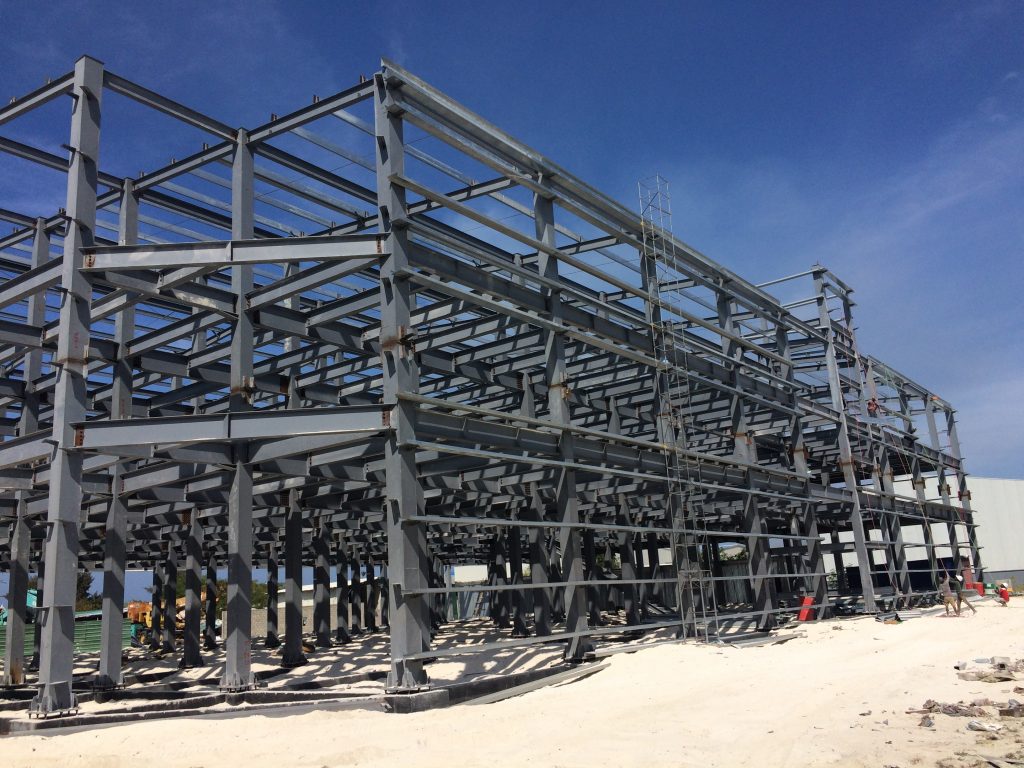
Conclusion
Lida Group has revolutionized agricultural storage by reimagining what on-farm storage can be—replacing outdated, inefficient traditional solutions with high-quality steel farm houses built using advanced steel frame techniques. By prioritizing durability, flexibility, and agricultural-specific design, Lida has addressed the longstanding pain points of farmers worldwide: crop loss from poor preservation, high maintenance costs, and inflexible storage that fails to adapt to changing farm needs.The company’s success stems from its holistic approach: advanced steel materials (zinc-aluminum coated, cold-rolled steel) ensure longevity; prefabricated assembly enables rapid deployment; and customizable features (clear-span design, modular expansion) adapt to diverse storage needs—from grain and produce to heavy machinery. Real-world case studies from the U.S., Australia, and Italy demonstrate that Lida’s steel farm houses deliver tangible results: reduced crop loss, lower maintenance costs, and increased farm profitability.Lida’s competitive edge lies in its refusal to offer generic steel structures; instead, it engineers every component for agricultural use, from rodent-proofing to grain bin integration. Its focus on total cost of ownership—rather than just upfront price—ensures that farmers receive long-term value, while end-to-end support simplifies the transition to modern storage.Looking ahead, Lida’s innovation roadmap—smart storage IoT integration, advanced materials, and climate-resilient design—promises to keep it at the forefront of agricultural storage innovation. As global food security becomes increasingly critical, Lida’s steel farm houses are more than just storage solutions; they are a vital tool for reducing food waste, supporting sustainable agriculture, and empowering farmers to thrive in a changing climate.In an industry where traditional storage has held back progress for decades, Lida Group has proven that advanced steel frame technology can transform agricultural storage—making it more efficient, durable, and aligned with the needs of modern farming. For farmers seeking to protect their livelihoods and contribute to global food security, Lida’s steel farm houses represent the future of agricultural storage.

Related news
-
The Future of On-Site Accommodation: Smart Technology in Lida Group's Prefab Worker's Dormitory and Mobile Units
2025-09-08 17:51:29
-
Lida Group Integrates Modern Amenities into Its High-Quality Mobile Building Designs for Superior Worker Comfort
2025-09-08 16:20:25
-
Engineered for Extreme Conditions: Lida Group's Prefab Worker's Dormitory Withstands Harsh Weather with Sandwich Panel Walls
2025-09-05 13:58:56
contact us
- Tel: +86-532-88966982
- Whatsapp: +86-13793209022
- E-mail: sales@lidajituan.com


